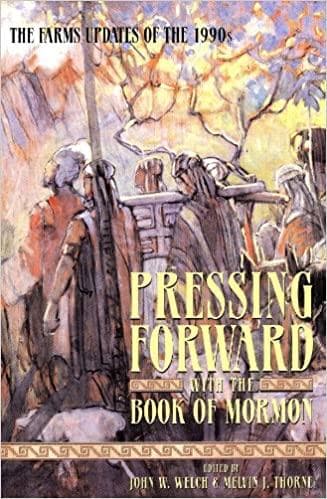Book
69 Chapters

“And I beheld his sword . . . and the workmanship thereof was exceedingly fine.” (1 Nephi 4:9)
So much has been written about the sword of Laban that it sometimes seems that there is nothing more to be said.1 But no one appears to have drawn a parallel between the description of the sword of Laban and a similar sword description in one of the Dead Sea Scrolls. Hence this brief note.
Let’s begin by reviewing what Nephi wrote about the sword of Laban, which he examined with care and evident awe:
And I beheld his sword, and I drew it forth from the sheath thereof; and the hilt thereof was of pure gold, and the workmanship thereof was exceedingly fine, and I saw that the blade thereof was of the most precious steel. (1 Nephi 4:9)
Compare this with the description given in the War Scroll of the swords to be used by the Israelites during the final battle between the forces of good and evil:
The swords shall be of purified iron, refined in a crucible and whitened like a mirror, work of a skilful craftsman; and it will have shapes of an ear of wheat, of pure gold, encrusted in it on both sides. And it will have two straight channels right to the tip, two on each side. Length of the sword: one cubit and a half. And its width: four fingers. The scabbard will be four thumbs; it will have four palms up to the scabbard and diagonally, the scabbard from one part to the other (will be) five palms. The hilt of the sword will be of select horn, craftwork, with a pattern in many colours: gold, silver and precious stones.2
The fact that both texts mention the hilt and the sheath or scabbard of the sword is relatively insignificant. More important is the composition of the hilt and the blade. Laban’s sword blade is made of “the most precious steel,” while the future swords of the Israelite army will have blades “of purified iron . . . whitened like a mirror.” Nephi describes the hilt as being made “of pure gold.” The future Israelite swords will have a hilt “of select horn . . . with a pattern in many colours: gold, silver and precious stones,” though designs in “pure gold” are also mentioned. Both the Nephite and the Qumran descriptions refer to the “workmanship” or “craftwork” of the swords, saying it was “exceedingly fine” or “of a skilful craftsman.” The War Scroll is particularly detailed when it describes the sword’s ornamentation and size.
Interestingly, the sword described in the Qumran document measures a cubit and a half in total length with a blade four fingers wide (i.e., its width is three inches, while the length depends on which cubit was meant). Using a cubit measure of 17.5 inches, it would have been 26.25 inches long (just over two feet), while a cubit of 20.4 inches would give a length of 30.6 inches or 2.5 feet. This reminds us that the seventh-century B.C. iron Israelite sword found at Vered Jericho measured three feet in length with a three-inch-wide blade. We do not know the size of Laban’s sword, but William J. Adams, in his discussion of the unusually long Vered Jericho sword, noted that Nephi would have had an easier time decapitating Laban with his sword (see 1 Nephi 4:18) if it were longer than the usual short swords known from the ancient Near East.3
I am not suggesting a direct connection between the account in 1 Nephi and the one in the War Scroll. But it may be that the idealized Israelite sword described in the latter reflects the concept of precious swords carried by earlier Israelite leaders such as Laban.
Research by John A. Tvedtnes, originally published in the Journal of Book of Mormon Studies 6/1 (1997): 73–75.
1. In the Journal of Book of Mormon Studies alone, the following articles have discussed the subject: Todd R. Kerr, “Ancient Aspects of Nephite Kingship in the Book of Mormon,” Journal of Book of Mormon Studies 1/1 (1992): 85–118; Brett L. Holbrook, “The Sword of Laban as a Symbol of Divine Authority and Kingship,” Journal of Book of Mormon Studies 2/1 (1993): 39–72; Daniel N. Rolph, “Prophets, Kings, and Swords: The Sword of Laban and Its Possible Pre-Laban Origin,” Journal of Book of Mormon Studies2/1 (1993): 73–79; William J. Adams Jr., “Nephi’s Jerusalem and Laban’s Sword,” Journal of Book of Mormon Studies 2/2 (1993): 194–95; and John A. Tvedtnes, “The Iliad and the Book of Mormon,” Journal of Book of Mormon Studies 5/1 (1996): 147.
2. 1QM, col. 5, lines 11–14, in Florentino García Martínez, The Dead Sea Scrolls Translated (Leiden: Brill, 1994), 99; italics added.
3. For details, see Adams, “Nephi’s Jerusalem.”
Book
69 Chapters
Items in the BMC Archive are made publicly available for non-commercial, private use. Inclusion within the BMC Archive does not imply endorsement. Items do not represent the official views of The Church of Jesus Christ of Latter-day Saints or of Book of Mormon Central.